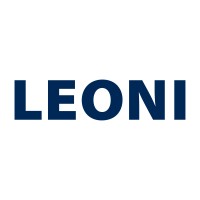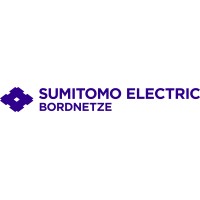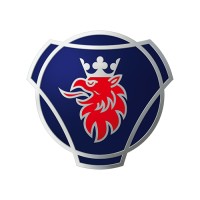Company Cyber Security Posture
NANA
NA Company Details
NA
NA
NA
NA
NA
NA
Scan still pending
NA
NA
Between 200 and 800
This score is AI-generated and less favored by cyber insurers, who prefer the TPRM score.
 NA Global Score
NA Global Score.png)

Company Scoring based on AI Models
| Model Name | Date | Description | Current Score Difference | Score |
|---|---|---|---|---|
| AVERAGE-Industry | 03-12-2025 | This score represents the average cybersecurity rating of companies already scanned within the same industry. It provides a benchmark to compare an individual company's security posture against its industry peers. | N/A | Between 200 and 800 |
Company Cyber Security News & History
| Entity | Type | Severity | Impact | Seen | Url ID | Details | View |
|---|
Company Subsidiaries

NA
Access Data Using Our API

Get company history
.png)
NA Cyber Security News
The Complete List of Hacker And Cybersecurity Movies
Gates: The Hippie and The Nerd — This documentary tells the story of two of the biggest men in tech, Bill Gates and Steve Jobs, and the ...
Meta Infotech Limited launches ₹80.18 crore IPO
Established in 1998 and headquartered in Mumbai, Meta Infotech Limited transitioned into the cybersecurity domain in 2010. The company delivers ...
Op Sindoor: India Inc's cyber shield holds firm against swarm of hackers
Cyberattacks on Indian businesses spiked dramatically —rising by up to three times — following the launch of Operation Sindoor, according to ...
AI-Powered Cybersecurity: How Machine Learning is Revolutionizing Threat Detection
Explore how Machine Learning (ML) is transforming cybersecurity with advanced threat detection techniques.
Contemplating a career in cybersecurity? Check out the in-demand skills, roles, and pay
The widespread adoption of technology has introduced us to a challenge that needs immediate attention: cyberattacks. The good news is that ...
India has a key role in global cybersecurity, says Germany's Maria Adebahr
Maria Adebahr, Director for Cyber, Foreign and Security Policy at Germany's Federal Foreign Office, praised India's strategic importance in the evolving ...
2024 Cybersecurity Almanac: 100 Facts, Figures, Predictions And Statistics
The past, present, and future of cybercrime. Brought to you by Cybersecurity Ventures and Evolution Equity Partners.
What makes Cybersecurity an attractive career choice in the US?
The US is at the cutting edge of technology and hence is at the higher risk for cyber attacks. Cybersecurity has a bigger scope in the US, ...
Google changes functioning of local services ads; could affect millions
Google is changing the way its Google Local Services ads work, which could affect millions of small businesses.

NA Similar Companies

Volkswagen Sachsen GmbH
In Sachsen werden seit über einhundert Jahren Automobile gebaut. Wir sind gern hier und arbeiten mit Menschen, die für Spitzenleistungen deutscher Ingenieure, für handwerkliche Exzellenz und ihren Teamgeist bekannt und anerkannt sind. Gemeinsam mit unseren Partner entwickeln wir intelligente Ideen u

LEONI
LEONI is a global provider of products, solutions and services for energy and data management in the automotive industry. The group of companies has around 95,000 employees in 26 countries and generated consolidated sales of EUR 5.5 billion in 2023. LEONI's largest customer group comprises the glo

Sumitomo Electric Bordnetze SE
Sumitomo Electric Bordnetze SE (SEBN) is a global automotive supplier with over 36,000 employees in 13 countries. SEBN is part of the Japanese group Sumitomo Electric Industries, which has 380 subsidiaries in various industries worldwide. The more than 400-year-old Sumitomo Electric Group employs 28

Goodyear Germany GmbH
Ein Konzern mit starken Marken Die Goodyear Dunlop Tires Germany GmbH ist Teil des weltweit agierenden Reifenherstellers Goodyear. Rund 70.000 Menschen auf der ganzen Welt arbeiten täglich daran, unsere Erfolgsgeschichte fortzuschreiben. In Deutschland betreiben wir an sieben Standorten sechs Pro

Harley-Davidson Motor Company
In 1903, out of a small shed in Milwaukee, Wisconsin, four young men lit a cultural wildfire that would grow and spread across geographies and generations. Their innovation and imagination for what was possible on two wheels sparked a transportation revolution and lifestyle that would make Harley-Da

Scania Group
Scania is a world-leading provider of transport solutions committed to a better tomorrow. Our purpose is to drive the shift towards a sustainable transport system. In doing so, we are creating a world of mobility that’s better for business, society and our environment. Employing more than 50,000 pe

Frequently Asked Questions
Explore insights on cybersecurity incidents, risk posture, and Rankiteo's assessments.
NA CyberSecurity History Information
How many cyber incidents has NA faced?
Total Incidents: According to Rankiteo, NA has faced 0 incidents in the past.
What types of cybersecurity incidents have occurred at NA?
Incident Types: The types of cybersecurity incidents that have occurred include .
Additional Questions
What Do We Measure?
















Every week, Rankiteo analyzes billions of signals to give organizations a sharper, faster view of emerging risks. With deeper, more actionable intelligence at their fingertips, security teams can outpace threat actors, respond instantly to Zero-Day attacks, and dramatically shrink their risk exposure window.
These are some of the factors we use to calculate the overall score:
Identify exposed access points, detect misconfigured SSL certificates, and uncover vulnerabilities across the network infrastructure.
Gain visibility into the software components used within an organization to detect vulnerabilities, manage risk, and ensure supply chain security.
Monitor and manage all IT assets and their configurations to ensure accurate, real-time visibility across the company's technology environment.
Leverage real-time insights on active threats, malware campaigns, and emerging vulnerabilities to proactively defend against evolving cyberattacks.




